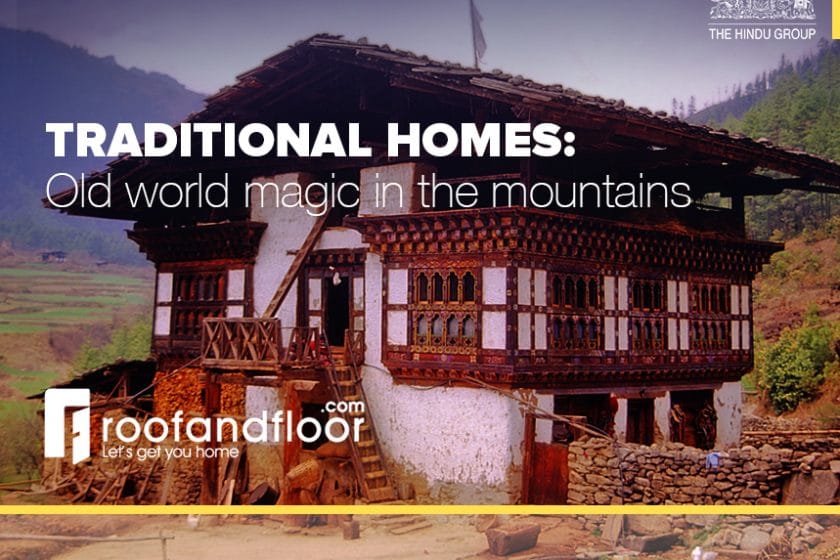Ura valley of Bhutan is famous for its awe-aspiring traditional Farm houses which is located at a height of 3000 meters above sea level in central Bhutan. This dwelling is surrounded by heartwarming mountains and linked with ‘drupka’ people. These houses are a part of number of clusters in valley known as ‘gung chim’. Two major sources of earning for these people are agriculture and weaving, thereby making these two a major part of the life of people and their homes.
Construction and structure
A blend of Tibetan and Chinese architecture gets reflected when you take a close look at these homes. Dried mud and stone masonry are major components with which these houses are constructed. Roof of the house is made of wooden shingles which are weighed down by stones. Therefore, if one wants to go outside, they may just push some shingles. On rooftop, there remains a prayer flag which is believed to send their prayers via wind.
Site plan
These dedicated homes for joint families are divided into three major zones namely public, semi-public and private zone. Public zone includes kitchen; semi-public zone includes guest room, prayer room (chosham), weaving room and store rooms whereas private zone comprises of bed rooms. It’s a two storey house, where the ground floor is a store and cattle shelter. The top floor is where the family lives. To reach the first floor one must ascend a narrow ladder made from the tree trunk. House comprises a verandah on top floor which is also used as a bathing place. Roof space on top floor is used as a storage area for vegetables and straw which is kept near to kitchen. Rooms don’t have separate toilets; Toilets are kept behind the house.
Building materials
Foundation is laid only after priest consecrate the site. Width of foundation is kept large and is brought up to plinth level. Timber floor is constructed with timber joints laid on masonry. Doors and windows are exclusively made up of pine wood which is well carved. Moreover, Bhutanese traditional art paintings cover the walls with all its grace.
“Ekra wall” which is a timber frame wall generally faces southern side. This frame is essentially made up of timber with bamboo strips on it with mud plastered on it. These walls are light weight and absorb frequent seismic vibrations. This wall is located at top floor with two windows with it. These windows forms normal room tight of these traditional homes and are not more than 2.5 meters high.
Roof which is made of shingles is divided into two portions. One is flat and the other one is two-sided sloping roof. Overhead wide woof is one of the features of Bhutanese traditional farm houses. As Bhutan receives heavy rainfall, roof overhangs protects timber and masonry below. Furthermore, space between roofs is used to dry red chilies, meat and firewood etc.
In your travels, if you stop by Bhutan – we advise you to stay a day or two at a traditional Bhutanese farm house. It would be an opportunity to get a firsthand experience of typical village life in Bhutan.

